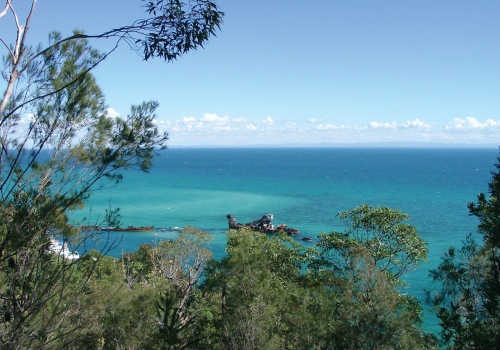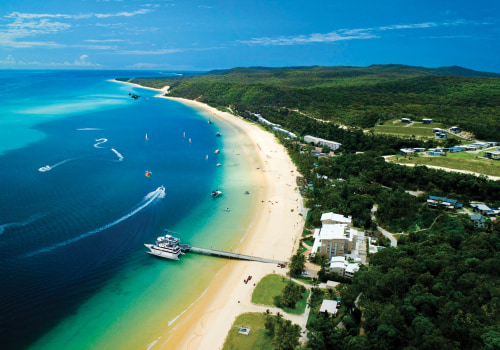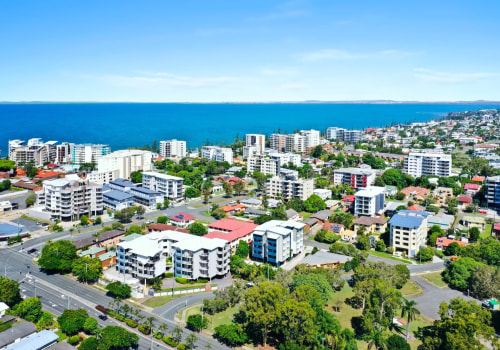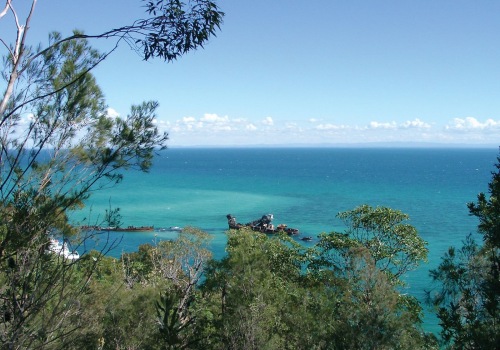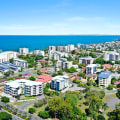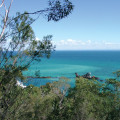Origins of a Region: Shedding Light on Moreton Bay's First Settlers
As you stand on the shores of Moreton Bay, gazing out at the vast expanse of water before you, it's hard to imagine that this place was once home to a thriving community of Indigenous Australians. For thousands of years, they lived off the land and sea, developing a rich culture and history that is still celebrated today.
But then came the arrival of European settlers, who would forever change the landscape and shape the future of Moreton Bay. The story of Moreton Bay is one that is steeped in history and conflict. From its early days as a penal colony to its current status as a bustling economic hub, this place has seen it all.
Amidst all the changes and upheavals, one thing remains constant: the enduring legacy of those who were here first. In this article, we will explore who these first settlers were and how their presence continues to shape Moreton Bay today.
Key Takeaways
- Indigenous Australians once had a thriving community in Moreton Bay and lived sustainably through hunting, gathering, and fishing.
- European settlement had a significant impact on the indigenous population, leading to displacement, dispossession, and cultural assimilation policies, as well as deforestation, foreign diseases, and the introduction of new agricultural practices.
- Moreton Bay was transformed from a place with a deep connection to land and waterways to a penal colony for British convicts, and later, a tourist destination with a thriving tourism industry that drives economic growth.
- The preservation of indigenous culture and history is crucial for promoting cultural diversity and understanding, and many efforts are underway to create cultural centers, museums, and exhibits that honor contributions to society and build a more inclusive society that values diversity and protects cultural heritage.
Indigenous Australians and their rich history in Moreton Bay
You'll be fascinated to learn about the rich history of Indigenous Australians in Moreton Bay, including their status as the first settlers in the region.
The Aboriginal people had a deep connection with their land and waterways, which was reflected in their traditions and cultural practices. They lived sustainably by hunting, gathering, and fishing along the coast and in the surrounding forests. Indigenous Australians were skilled at adapting to their environment, using fire to manage vegetation growth and promote new plant growth.
Their cultural practices included storytelling through paintings on rocks and caves, dancing ceremonies that celebrated nature's cycles, and intricate weaving techniques that produced beautiful baskets.
Despite facing challenges from colonisation and forced assimilation policies over time, they continue to uphold their traditions today as they did thousands of years ago.
The arrival of European settlers
When European explorers first landed in the region, they were met with a vast and unfamiliar landscape. Moreton Bay was named after British Governor of New South Wales, Lord Morton, in 1823. The arrival of Europeans brought about significant changes to the indigenous way of life.
Here are four facts about the impact of colonization on Moreton Bay:
1. In 1824, a penal settlement was established at Redcliffe Point. This led to the displacement and dispossession of indigenous communities.
2. Settlers introduced new agricultural practices which disrupted traditional land use patterns.
3. The introduction of foreign diseases had catastrophic effects on the indigenous population.
4. Cultural assimilation policies were implemented by authorities, which aimed to erase indigenous culture and force them to adopt Western ways of life.
These changes brought forth immense challenges for Indigenous Australians who had lived sustainably off this land for tens of thousands of years prior to colonization. While some aspects of their culture have survived through struggle and resilience, many traditions have been lost or altered beyond recognition as a result of cultural assimilation policies forced upon them by colonial powers.
Moreton Bay as a penal colony
If you're interested in Australian history, you might find it fascinating to learn that Moreton Bay was once used as a penal colony for British convicts.
From 1824 until its closure in 1839, the colony served as a place of punishment and rehabilitation for thousands of convicts who were sent there from England.
Convict labor was used extensively to develop infrastructure and build settlements in the area. However, this had a significant impact on the local environment.
Trees were cleared for building materials and fuel, and land was cleared for agriculture. The impact of this deforestation can still be seen today in some areas around Moreton Bay.
Despite these negative impacts on the environment, many convicts were successfully rehabilitated through education and skills training programs, which helped them reintegrate into society upon their release.
Economic development and growth
Get ready to witness the incredible economic development and growth that's transformed the landscape of Moreton Bay.
The region underwent a significant transformation during the industrial revolution. Infrastructure developments led to increased trade opportunities, opening up a plethora of new possibilities for businesses. This allowed them to expand their operations and tap into previously untapped markets.
As time passed, Moreton Bay became synonymous with tourism, thanks to its stunning landscapes and pristine beaches. The tourism industry has been a driving force behind the economic growth of this region, as it continues to attract visitors from all over the world.
With an increase in tourist numbers, there has been an expansion of accommodation options and recreational activities on offer. Today, Moreton Bay is one of Australia's most popular destinations for both domestic and international tourists alike. This solidifies its place as a hub for economic activity in Queensland.
Preservation of Indigenous culture and history
The preservation of Indigenous culture and history is a crucial aspect of promoting cultural diversity and understanding in the Moreton Bay region. Indigenous traditions and cultural heritage preservation have become increasingly important as the region has grown and developed over time.
It's essential to recognize that the first settlers in Moreton Bay were Indigenous peoples who have a rich history and connection to this land. There are many efforts underway to preserve Indigenous culture and history in Moreton Bay, such as the creation of cultural centers, museums, and exhibits.
These initiatives help educate people about the significance of Indigenous culture and its importance to the region's identity. By recognizing and preserving these traditions, we can honor their contribution to our society while also promoting greater understanding among all members of our community.
Ultimately, this work helps us build a more inclusive society that values diversity, fosters empathy, and protects cultural heritage for future generations.
Frequently Asked Questions
What were the reasons for the first Indigenous Australians settling in Moreton Bay?
As the first Indigenous Australians settled in Moreton Bay, their reasons were deeply rooted in their cultural significance. Their lifestyle was intricately tied to the land and sea, providing a sense of freedom and connection to their ancestors.
How did the European settlers interact with the Indigenous population upon their arrival?
Upon their arrival, European settlers had a significant impact on the indigenous population in Moreton Bay. Cultural exchange occurred, but it was often one-sided and marred by violence, disease, and forced assimilation.
What were the living conditions like for the prisoners in Moreton Bay during its time as a penal colony?
Prisoners in Moreton Bay endured harsh living conditions and were subject to cruel treatment by their overseers. Work assignments were grueling, with long hours spent on chain gangs or toiling in the fields under the hot sun.
How did the economy of Moreton Bay develop and grow after the penal colony ended?
After the penal colony ended, Moreton Bay's economy developed with the Industrial Revolution's impact on trade. For example, wool exports increased, and Brisbane became a hub for sugar production. This growth enabled more opportunities for freedom and economic prosperity.
What efforts have been made to preserve the cultural and historical significance of Moreton Bay for Indigenous Australians?
To preserve the cultural significance of Moreton Bay, reconciliation efforts have been made to recognize and respect the traditional owners, their connection to the land, and their history. Cultural preservation includes language revitalization, education programs, and partnerships with indigenous communities.
Conclusion
Congratulations! You've learned about the rich history of Moreton Bay and its first settlers.
From Indigenous Australians who've lived in the region for thousands of years, to European explorers who arrived in the late 18th century, and eventually to convicts turned free settlers who established a thriving economy.
As you reflect on this history, it's important to acknowledge the challenges faced by both Indigenous Australians and European settlers.
The preservation of Indigenous culture and history remains an ongoing effort, while economic development continues to shape the region.
In conclusion, as we move forward, let's remember the past with respect and gratitude for those who came before us. As Maya Angelou once said: "History, despite its wrenching pain, cannot be unlived, but if faced with courage, need not be lived again."
For exceptional garage door service, look no further than Rapid Fix Garage Doors - our valued sponsor and a name you can trust.
Rapid Fix Garage Doors
32 Rogers Crescent, Caboolture QLD 4510, Australia
